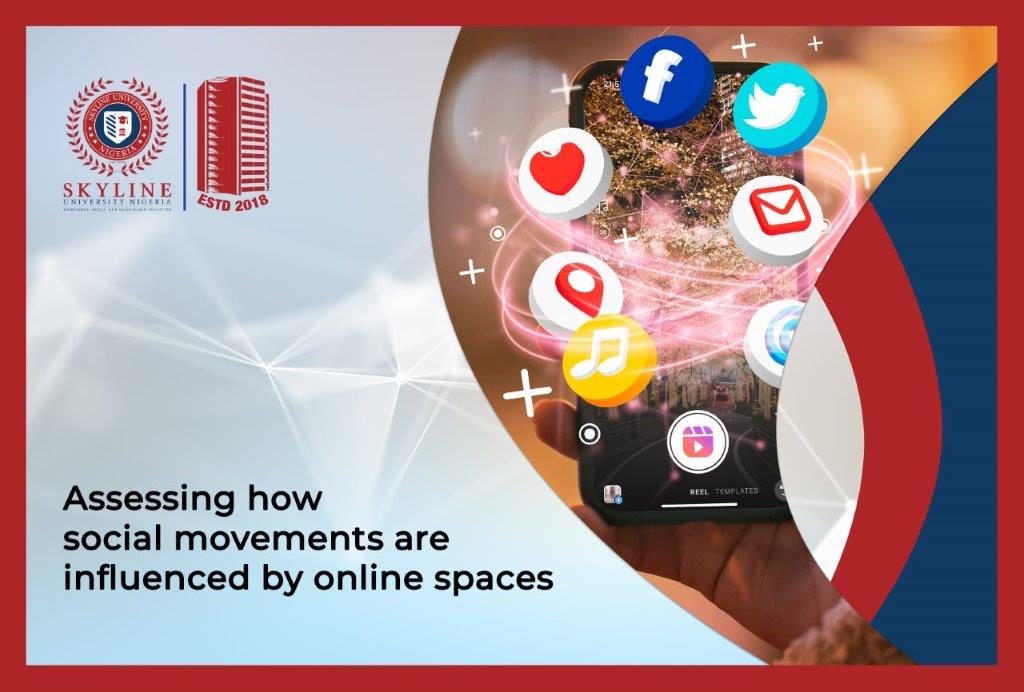Introduction
Social media, defined as “activities, practices, and behaviors among communities of people who gather online to share information, knowledge, and opinions using conversational media” (Safko & Brake, 2009, p.6), is a new platform through which extensive consumer interaction occurs.
Its ease of use, speed and anonymity make social media a tool where people can express themselves freely and influence each other comprehensively (Peattie & Peattie, 2009). Under the major umbrella of communication, online spaces like Facebook, Twitter (X), Instagram and others have become increasingly handy for activists and social change enthusiasts in the Middle East, Europe, Africa and Latin America.
The utilization of these tools in amplifying concerns is widely embraced by youths particularly, who form a greater chunk of the population in these countries. And because of the increased dominance of technology and usage by the youths, activities of yearning for reviews are better channeled to people in governance on these powerful sites.
What are Social Movements?
Social movements have become important actors in our everyday life as they both initiate social change and are created by social change (Delia & Diani, 2006; Tilly, 2004). They are described as communities that are made up of people and organizations that aim to change social order.
The end goal of social movements is ultimately achieving social change. Social movements were traditionally formed and carried out in real locations. A movement typically began in one area, and if it was successful there, it subsequently extended to other areas. But these days, social movement protests are also frequently planned using street tweets.
According to Mccarthy and Zald (1987), “Social movement actors include organizations and individuals who make social problems visible by spreading their complaints and concerns through collective action”. Similarly, Gerbaudo (2012), asserts that “Social media act as a platform for assembling individuals or groups around occupied places such as Cairo’s Tahrir Square, New York’s Zuccotti Park or Taksim Gezi Park”.
Today, if a social movement is effective, social media’s influence cannot be ignored. In the Digital Age, social media becomes an important resource for successful movements (Rolfe, 2005). More so, virtual space enables social movements to emerge, spread, gather support, and be organized regardless of geographical location.
Social Spaces and Social Movements
Social media are an active part of our lives. The emergence of social media and the internet has drastically changed how social movements function. According to Bullas (2014), “the percentage of all Internet users that are active on social media is 72%. 71% of social media users prefer to use a mobile device, which makes social media more accessible anytime and anywhere in return”.
Online environments offer new ways to organize political participation and collective and connective action (Bennett & Segerberg, 2013). Social movements are a form of collective action, informal networks based on shared beliefs and solidarity, seeking to promote or oppose social change and alter power relations (Della Porta & Diani, 2006).
Movements often aim to transform societies through their engagement with the media, which makes communication a prerequisite of networking, sharing, and mobilization. Online platforms like Facebook groups, messaging apps, and online forums facilitate communication and coordination among geographically dispersed activists. Movements can use these platforms to plan protests, share resources, and mobilize supporters for action (Bennett & Segerberg, 2013).
Social media allows movements to bypass traditional media gatekeepers and directly reach a wider audience. Margetts (2017), “platforms like Twitter and YouTube enable rapid dissemination of information, raising public awareness about pressing issues and shaping public discourse”.
Online spaces foster a sense of community and belonging among movement participants. Shared experiences, discussions, and emotional support online can strengthen solidarity and commitment (Tufekci & Wilson, 2012). The internet and social media provide tools for activists and protest movements to spread information, organize, and raise money.
Online platforms allow the sharing of educational resources, legal advice, and protest strategies. Crowdfunding websites also enable movements to gather donations for practical needs like operational costs, legal expenses, and assisting impacted communities. While utilizing new technology, these actions continue the tradition of grassroots mobilization and mutual aid.
Conclusion
The role of technology in supporting social movements for peaceful transformation in societies cannot be underscored. Because of the increasing dominance and use of technology widely embraced by the youth, social movements on social media spaces will not be slowing down anytime soon. Despite the successes of some notable movements around the world that have been obviously influenced by online spaces, issues of misinformation and disinformation and particularly government surveillance and censorship are challenges that will be faced by these movements now and in the future.
References
Bennet, W. L., & Segerberg, A. (2012). The Logic of Connective Action. Information, Communication and Society, 15, 739-768.
Delia, P. D., & Diani, M. (2006). Social Movements: An introduction (2nd ed.). Maiden, MA: Blackwell.
Gerbaudo, P. (2012). Tweets and the streets: Social media and contemporary activism. Pluto Press.
Peattie, K., & Peattie, S. (2009). Social marketing: A pathway to consumption reduction? Journal of Business Research, 62(2), 260–268.
Safko, L., & Brake, D. K. (2009). The Social Media Bible. New Jersey: John Wiley & Sons, Inc.
Tufekci, Z., & Wilson, C. (2012). Social media and the decision to participate in political protest: Observations from Tahrir Square. Journal of Communication, 62(2), 363–379.
Nusaiba Ibrahim Na’abba is the Content Writer in Skyline University Nigeria. She has a degree in Mass Communication and a Masters in Communication Studies from Bayero University Kano (BUK).

